Your next pint of craft beer could come from an energy-efficient greenhouse
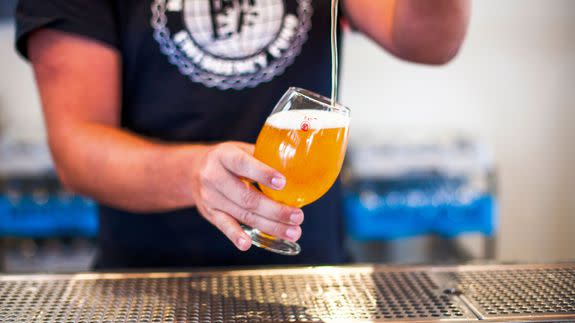
Inside a spacious greenhouse in Fort Collins, Colorado, a kaleidoscope of red and blue lights beam down on rows of hop plants.
Hops are a key ingredient in beer, and they typically flower just once a year in this mountainous state. But Bill Bauerle, who runs the greenhouse, recently picked his fourth crop since January thanks to the manipulative powers of his energy-efficient, color-changing LED lights.
SEE ALSO: Bud Light backs gender inclusivity in new faux-campaign ad
Bauerle is a professor of horticulture at Colorado State University and an expert in “hoponics” — the science and technology of growing hydroponic hops.
After each harvest, he trucks the fragrant, pine cone-shaped-flowers over to nearby craft breweries, which transform the fresh hops into small batches of India pale, extra pale or golden ales.
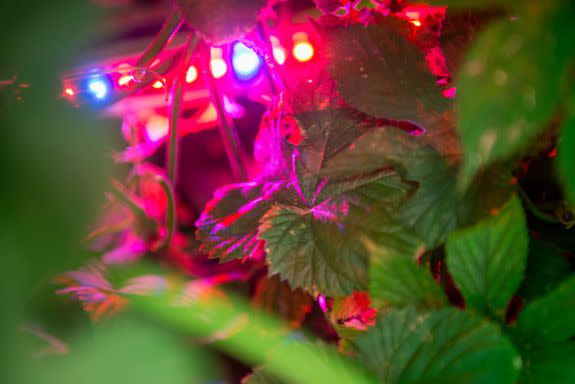
Image: CSU Photography

Image: CSU photography
With his 3,200-square-foot research operation, Bauerle said he hopes to create a new business model to satisfy Colorado’s insatiable thirst for locally-made craft beers.
“These breweries would like a local, quality hop. They haven’t been able to get that up until now,” Bauerle told Mashable from Fort Collins.
The greenhouse boom
Bauerle’s project is one in an expanding field of agricultural experiments that are using LED (light-emitting diode) lamps and other innovative greenhouse technologies.
Researchers are producing new varieties of plants and growing fruits and vegetables in regions where chilly weather, harsh rains or lack of sunlight previously precluded such harvests.
In the Netherlands, researchers at Wageningen University are using specially-calibrated LED lights in greenhouses to grow juicy tomatoes with 50 percent more Vitamin C than ordinary versions. In Japan, plant scientists are producing 10,000 heads of lettuce a day at a massive indoor farm built in a former semiconductor factory.
“As a general rule of thumb, if it’s green and it grows, LEDs probably have a fit in terms of affecting how [plants] grow in a controlled environment,” Ron Dekok, director of horticulture LED solutions at Philips Lighting, said in a phone interview.
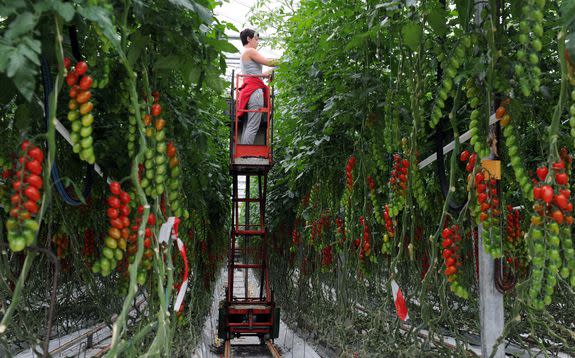
Image: FRED TANNEAU/AFP/Getty Images
Philips Lighting provided the LED systems in Bauerle’s greenhouse as part of a long-term partnership with Colorado State University. The Amsterdam-based manufacturer is also working on greenhouse projects to grow lettuce in London, tomatoes in England’s Isle of Wight and fruits and herbs in the Dutch town of Eindhoven.
“If we can complement what the sun is doing, and extend day lengths or increase light available to the plant, the world is wide open to this research development,” Dekok said.
Lighting up
LEDs have two main benefits for greenhouse growers compared to other types of lighting, such as high-pressure sodium lamps.
First, digital controls can easily adjust the LEDs to shine particular parts of the color spectrum. Red light is the most efficient color for encouraging photosynthesis. Blue lights trigger the plant’s pores — called stomata — to take in carbon dioxide and release oxygen and water, which can boost plants’ health.
Second, LEDs are much more energy-efficient than traditional light sources, a crucial feature considering that greenhouses consume hefty amounts of electricity to mimic the sun's light. LEDs can reduce a greenhouse’s energy consumption by up to 70 percent compared to other lighting, according to a 2012 study by Pennsylvania State University.
This also benefits energy-hungry buildings such as warehouses and hospitals.
An LED system, for instance, can produce the same amount of light as a similarly sized fluorescent light but with 60 percent less energy, Jay Black, a vice president at Revolution Lighting Technologies Inc., a Connecticut-based LED manufacturer, told Mashable.
LEDs can also last longer in some cases, beaming light for around 100,000 hours before burning out, compared to 25,000 hours with fluorescents, Black said.
Hacking hops
In Bauerle’s case, the Fort Collins greenhouse allows him to tinker with methods for growing far more hops than beer-obsessed Colorado could produce outdoors.
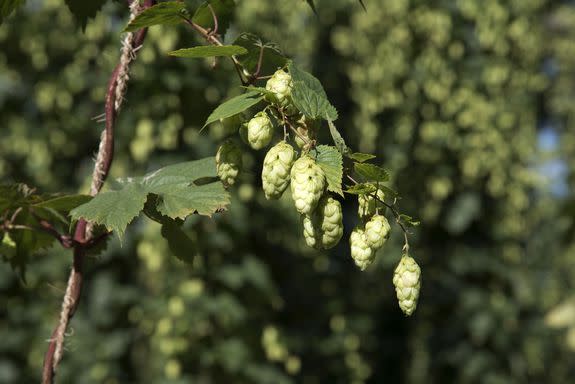
Image: UIG via Getty Images
The professor can grow hops year-round, even during the months when the state’s blustery winds and hailstorms would destroy most crops. Since the hops are grown hydroponically — meaning the roots are in an aquatic system, not soil — the plants receive water and fertilizer multiple times a day, compared to just a few times per harvest outside.
The hops won’t become just any type of beer. They’re earmarked for “wet hop” brews, which are made with freshly-picked hops and boast a more intense flavor.
Fresh hops must be brewed within one to two days after being mechanically picked from the vine; otherwise their chemical components degrade too quickly. Most brewers use dried hops that, while delivering less flavor, can be brewed on a more relaxed timescale.
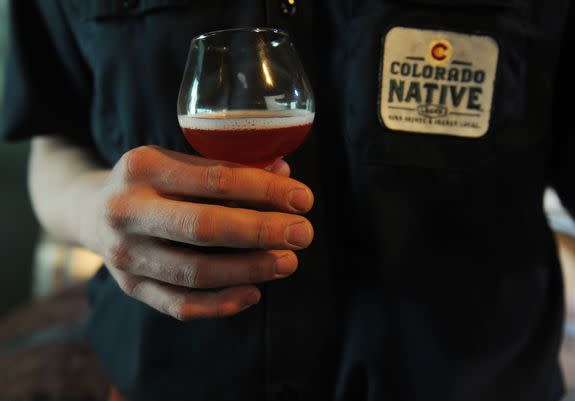
Image: Denver Post via Getty Images
“It’s like using fresh herbs instead of dry herbs — the optimal way to use them is when they’re fresh,” Bauerle said.
Up until now, Colorado brewers could only get fresh hops once a year, around the harvest in late August to early September. Bauerle said he expects to get five harvests before the end of this year, a number that may rise if Colorado entrepreneurs build their own hops-friendly greenhouses.
His fourth harvest this year wrapped up in mid-August, and his fifth will likely take place in late December.
Bauerle now plans to keep hacking his hydroponic hops to find the most bountiful, commercially viable way to grow the plants. “I plan to focus my career path on this from this point forward,” he said.
